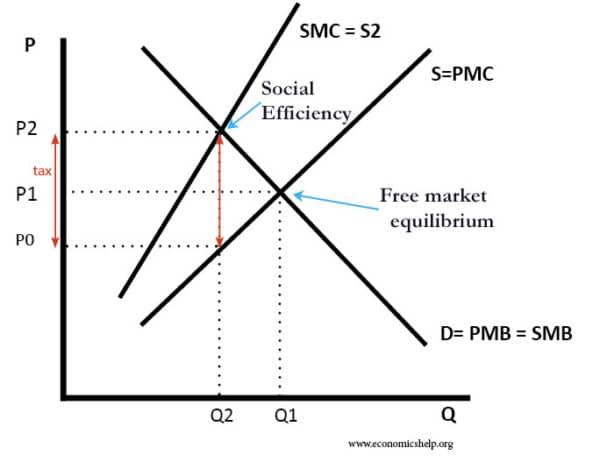
And since more widgets are being produced, more air is being polluted. So, ultimately, more widgets are produced than would be the case if all costs were included.
NEGATIVE EXTERNALITY FULL
Consumers will buy more widgets at the artificially low price than at a price that reflects their full production cost. And, because the firm isn't paying the full cost of producing widgets, the price charged for widgets is artificially low. So, in this case, pollution represents the shifting of some of the cost of production to society, a negative externality. Instead, if society wants clean air, society must pay to clean it. If the firm were paying the full cost of production, it would return clean air to the atmosphere. How? Well, in its production process the firm uses clean air-a resource it does not pay for-and returns polluted air to the atmosphere, which creates a potential health risk to anyone who breathes it. From an economic perspective, the firm is shifting some of its cost of production to society. The smokestacks at the factory, however, belch out pollution 24/7.

Imagine there's a factory in your town that produces widgets, a good that benefits consumers all over the world. So, externalities occur when some of the costs or benefits of a transaction fall on someone other than the producer or the consumer. A positive externality occurs when a benefit spills over. A negative externality occurs when a cost spills over. These spillover costs and benefits are called externalities. However, sometimes, costs or benefits may spill over to a third party not directly involved in the transaction. For example, when you buy a doughnut at the store, it's reasonable to assume all the costs and benefits of the transaction are contained between the seller and you, the buyer. When markets are functioning well, all the costs and benefits of a transaction for a good or service are absorbed by the buyer and seller. All three are actually examples of economic transactions that include externalities.

What do pollution, education, and your neighbor's dog have in common?
NEGATIVE EXTERNALITY SERIES
Subscribe to the Economic Lowdown Podcast Series on: Watch the video version of this episode.Learn more about the Q&A Resources for Teachers and Students » To provide students with online questions following the episode, register your class through the Econ Lowdown Teacher Portal.


 0 kommentar(er)
0 kommentar(er)
